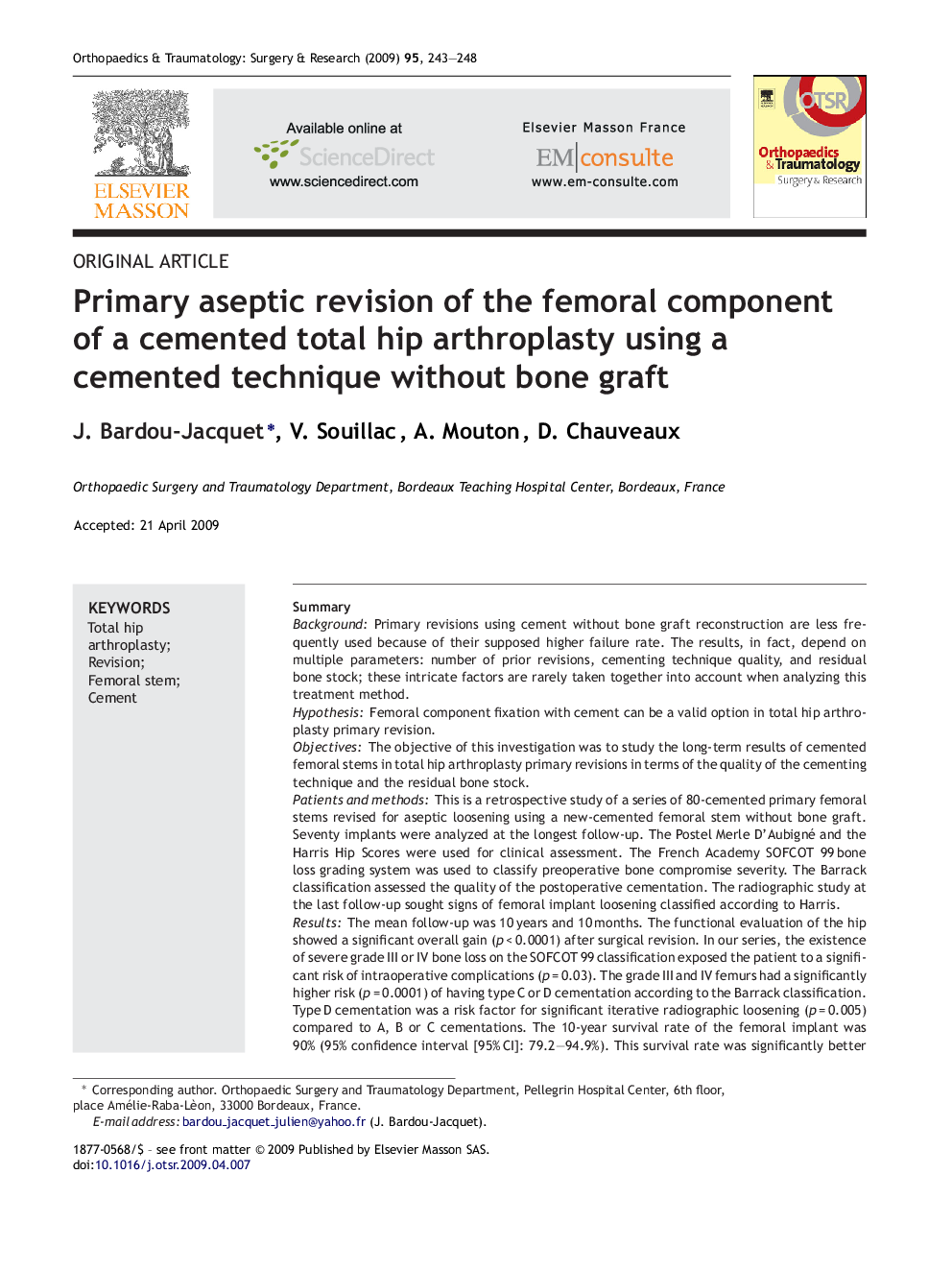| Article ID | Journal | Published Year | Pages | File Type |
|---|---|---|---|---|
| 4082614 | Orthopaedics & Traumatology: Surgery & Research | 2009 | 6 Pages |
SummaryBackgroundPrimary revisions using cement without bone graft reconstruction are less frequently used because of their supposed higher failure rate. The results, in fact, depend on multiple parameters: number of prior revisions, cementing technique quality, and residual bone stock; these intricate factors are rarely taken together into account when analyzing this treatment method.HypothesisFemoral component fixation with cement can be a valid option in total hip arthroplasty primary revision.ObjectivesThe objective of this investigation was to study the long-term results of cemented femoral stems in total hip arthroplasty primary revisions in terms of the quality of the cementing technique and the residual bone stock.Patients and methodsThis is a retrospective study of a series of 80-cemented primary femoral stems revised for aseptic loosening using a new-cemented femoral stem without bone graft. Seventy implants were analyzed at the longest follow-up. The Postel Merle D’Aubigné and the Harris Hip Scores were used for clinical assessment. The French Academy SOFCOT 99 bone loss grading system was used to classify preoperative bone compromise severity. The Barrack classification assessed the quality of the postoperative cementation. The radiographic study at the last follow-up sought signs of femoral implant loosening classified according to Harris.ResultsThe mean follow-up was 10 years and 10 months. The functional evaluation of the hip showed a significant overall gain (p < 0.0001) after surgical revision. In our series, the existence of severe grade III or IV bone loss on the SOFCOT 99 classification exposed the patient to a significant risk of intraoperative complications (p = 0.03). The grade III and IV femurs had a significantly higher risk (p = 0.0001) of having type C or D cementation according to the Barrack classification. Type D cementation was a risk factor for significant iterative radiographic loosening (p = 0.005) compared to A, B or C cementations. The 10-year survival rate of the femoral implant was 90% (95% confidence interval [95% CI]: 79.2–94.9%). This survival rate was significantly better (p = 0.0016) for revisions with type A or B cementations on the Barrack scale (96% survival; 95% CI: 85.1–99%) than for type C or D (70% survival; 95% CI: 41.4–86.1%).ConclusionThis study shows that revised cemented femoral stems without bone graft added are a valid therapeutic option in primary cemented total hip arthroplasty revisions provided that a good-quality cement technique can be achieved. Sufficient bone stock (SOFCOT 99 grade 0, I or II) was indispensable for good cementation.Level of evidenceIV: therapeutic retrospective study.
